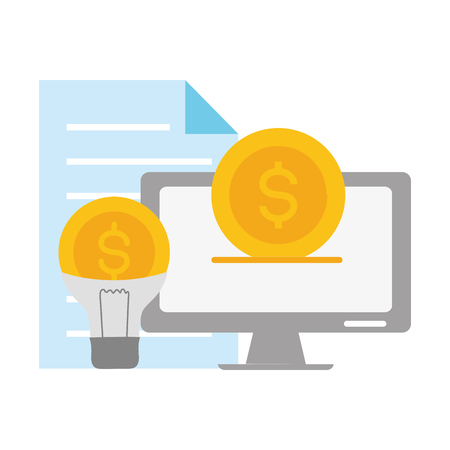1. Introduction: The Role of Central Banks in Precious Metals Markets
Central banks play a crucial role in shaping financial markets, including the prices of gold and silver. These institutions are responsible for managing a countrys monetary policy, controlling inflation, and stabilizing the economy. Their actions can significantly impact investor sentiment, currency values, and demand for precious metals.
How Central Banks Influence Financial Markets
Central banks influence financial markets through several key mechanisms:
- Monetary Policy Decisions: Interest rate changes and money supply adjustments affect liquidity and inflation, which directly impact gold and silver prices.
- Foreign Exchange Reserves: Central banks hold large reserves of gold, influencing supply and demand dynamics.
- Market Interventions: Some central banks buy or sell gold to stabilize their currency or economy.
The Relationship Between Central Banks and Precious Metals
The connection between central banks and precious metals is complex. Gold and silver are often seen as safe-haven assets during economic uncertainty, and central bank policies can either strengthen or weaken their appeal. Below is an overview of how different central bank actions impact gold and silver prices:
| Central Bank Action | Effect on Gold & Silver Prices |
|---|---|
| Lowering Interest Rates | Increases demand for gold as a store of value |
| Raising Interest Rates | Lowers gold demand as interest-bearing assets become more attractive |
| Quantitative Easing (QE) | Tends to drive gold prices higher due to inflation concerns |
| Selling Gold Reserves | Puts downward pressure on gold prices |
| Buying Gold Reserves | Tends to push gold prices higher due to increased demand |
The Long-Term Impact of Central Bank Policies on Precious Metals
The influence of central banks on gold and silver is not just short-term. Over time, their decisions shape investor confidence, inflation expectations, and overall economic stability. As we explore further, we will examine specific ways in which these institutions continue to shape the precious metals market.
2. Monetary Policy and Precious Metals
Central banks play a crucial role in shaping the value of gold and silver through their monetary policies. By adjusting interest rates, controlling inflation, and managing the money supply, they influence how investors perceive and use precious metals as a store of value or hedge against economic uncertainty.
Interest Rates and Gold & Silver Prices
Interest rates set by central banks directly impact the opportunity cost of holding gold and silver. Unlike bonds or savings accounts, precious metals do not yield interest or dividends. When interest rates rise, investors may shift towards interest-bearing assets, reducing demand for gold and silver. Conversely, when rates fall, these metals become more attractive as a safe-haven investment.
How Interest Rate Changes Impact Precious Metals
| Interest Rate Movement | Effect on Gold & Silver |
|---|---|
| Increase | Lower demand due to higher yields from bonds and savings |
| Decrease | Higher demand as investors seek alternative stores of value |
Inflation Control and Precious Metals
Gold and silver are often used as hedges against inflation. When central banks implement policies to control inflation, it affects the purchasing power of currency and, consequently, the demand for precious metals.
The Relationship Between Inflation and Precious Metals
- High Inflation: Investors buy gold and silver to preserve wealth as currency loses value.
- Low Inflation: Demand for precious metals may decline as confidence in currency stability increases.
Money Supply Adjustments
The expansion or contraction of the money supply also impacts gold and silver prices. When central banks increase the money supply through quantitative easing or other measures, inflationary concerns arise, boosting demand for precious metals. On the other hand, tightening the money supply can strengthen fiat currencies, reducing the appeal of gold and silver.

3. Central Bank Gold Reserves and Market Influence
Central banks play a major role in shaping the gold and silver markets through their reserves and trading strategies. Their buying and selling decisions can significantly impact supply, demand, and overall market sentiment.
How Central Banks Manage Gold Reserves
Central banks hold gold reserves as part of their monetary policies. These reserves serve multiple purposes, including stabilizing currency values, hedging against inflation, and maintaining financial security.
(1) Reasons for Holding Gold Reserves
- Economic Stability: Gold acts as a safeguard during economic downturns or financial crises.
- Inflation Hedge: Gold retains value when fiat currencies weaken due to inflation.
- Reserve Diversification: Holding gold reduces dependency on foreign currencies.
- Market Confidence: Large gold reserves signal strong economic fundamentals to global investors.
The Impact of Central Bank Gold Buying and Selling
The buying and selling strategies of central banks influence global gold prices. When central banks buy gold in large quantities, it increases demand and pushes prices higher. Conversely, large-scale selling can lead to price declines.
(2) How Buying Affects Prices
- Increases Demand: More purchases reduce available supply, driving prices up.
- Boosts Investor Confidence: When central banks accumulate gold, private investors may follow suit.
- Affects Currency Strength: Countries increasing gold reserves often see stronger national currencies.
(3) How Selling Affects Prices
- Lowers Demand: Increased supply from central bank sales can reduce prices.
- Sparks Market Uncertainty: Large sell-offs may indicate economic concerns or policy shifts.
- Affects Inflation Expectations: Reduced holdings might weaken confidence in a countrys monetary stability.
A Look at Major Central Banks’ Gold Holdings
The worlds largest central banks hold significant amounts of gold. The table below highlights some of the biggest holders and their approximate reserves.
| Central Bank | Total Gold Reserves (Tons) |
|---|---|
| Federal Reserve (USA) | 8,133 |
| Bundesbank (Germany) | 3,355 |
| Banca dItalia (Italy) | 2,452 |
| Banque de France (France) | 2,437 |
| PBOC (China) | 2,192 |
| CBE (Russia) | 2,299 |
The policies of these central banks directly impact global markets. Investors closely monitor any changes in their gold holdings to anticipate future price trends.
4. The Impact of Currency Valuation on Gold and Silver Prices
Gold and silver prices are closely tied to the value of major currencies, especially the U.S. dollar. Since precious metals are globally traded commodities, any fluctuation in currency valuation can directly impact their prices. Understanding this relationship can help investors make more informed decisions.
How Currency Value Affects Gold and Silver
The value of gold and silver tends to move inversely to the U.S. dollar. When the dollar strengthens, gold and silver prices often decline because they become more expensive for foreign investors. Conversely, when the dollar weakens, these metals typically rise in value as they become more affordable internationally.
(1) U.S. Dollar Index (DXY) and Precious Metals
The U.S. Dollar Index (DXY), which measures the dollar against a basket of major currencies, is a key indicator for gold and silver price movements. A rising DXY generally signals lower precious metal prices, while a falling DXY suggests higher prices.
(2) Inflation and Currency Devaluation
When inflation rises, central banks may devalue their currency by increasing money supply or keeping interest rates low. This often drives investors toward gold and silver as safe-haven assets to preserve purchasing power.
(1) Historical Trends: Dollar vs. Gold Prices
| Year | U.S. Dollar Index (DXY) | Gold Price per Ounce |
|---|---|---|
| 2008 | 85 | $870 |
| 2011 | 73 | $1,900 |
| 2020 | 92 | $2,070 |
| 2023 | 103 | $1,850 |
The Role of Other Major Currencies
While the U.S. dollar plays the most significant role in gold and silver pricing, other major currencies like the euro, yen, and yuan also contribute to price fluctuations.
(1) Euros Influence on Precious Metals
A weakening euro can push European investors toward gold as a hedge against currency depreciation, increasing demand and driving up prices.
(2) Emerging Market Currencies and Gold Demand
Currencies from countries like China and India significantly impact global gold demand. If these currencies weaken, local buyers may face higher costs for gold imports, reducing demand and potentially lowering prices.
5. Geopolitical and Economic Stability: The Safe-Haven Effect
During times of geopolitical tension or economic uncertainty, investors often turn to gold and silver as safe-haven assets. Central banks play a crucial role in shaping market sentiment by adjusting monetary policies, interest rates, and foreign exchange reserves. Understanding how these factors influence investor behavior can provide insight into gold and silver price fluctuations.
How Central Banks React to Economic Uncertainty
When financial markets experience instability, central banks implement various measures to restore confidence. These actions can directly impact the appeal of precious metals as safe-haven investments.
(1) Lowering Interest Rates
During economic downturns, central banks often reduce interest rates to stimulate growth. Since gold and silver do not yield interest or dividends, lower interest rates make them more attractive compared to fixed-income assets like bonds.
(2) Increasing Money Supply
In response to recessions or crises, central banks may engage in quantitative easing (QE), increasing the money supply. This can lead to inflation concerns, prompting investors to buy gold and silver as hedges against currency devaluation.
(3) Managing Foreign Reserves
Central banks hold reserves in various currencies and assets, including gold. When they increase their gold reserves, it signals confidence in gold’s long-term value, boosting demand and prices.
The Safe-Haven Appeal of Gold and Silver
The perception of gold and silver as reliable stores of value intensifies during financial instability. Below is a comparison of key factors influencing their safe-haven appeal:
| Factor | Impact on Gold & Silver Prices |
|---|---|
| Stock Market Volatility | Investors shift funds from equities to gold/silver for stability. |
| Crisis-Driven Inflation | Higher inflation increases demand for precious metals as a hedge. |
| Currency Depreciation | A weaker currency boosts gold/silver prices due to their store-of-value nature. |
| Political Instability | Elections, conflicts, or policy changes drive investors toward safe-haven assets. |
The Role of Global Events in Precious Metals Demand
Certain global events trigger increased demand for gold and silver as investors seek stability:
(1) Financial Crises
Panic-driven sell-offs in traditional markets often lead to surges in gold and silver prices.
(2) Trade Wars & Sanctions
Tensions between major economies create uncertainty, leading investors toward safe-haven assets.
(3) Geopolitical Conflicts
Terrorism, wars, or diplomatic tensions drive demand for gold and silver as secure investments.
(1) Example: 2008 Financial Crisis
The collapse of Lehman Brothers triggered a rush to gold, pushing its price up significantly.
(2) Example: COVID-19 Pandemic
Pandemic-related uncertainties led to record-high gold prices in 2020 as central banks eased monetary policies.
The influence of central banks on economic stability plays a significant role in shaping investor sentiment towards gold and silver. Their policies can either reinforce confidence in fiat currencies or drive demand for precious metals when uncertainty arises.


